80 Acres Farms is creating a replicable model for distributing locally grown produce more effectively.
Do you know how far the produce in your fridge has traveled to get to your house? I just checked: My rocket mix came from Mexico, my blueberries came from Peru, and my red grapes came from California.
The fact that my fridge feels more foreign than domestic is just how it is these days—if you buy your produce at large grocery stores, at least. Lettuce grown in California’s San Joaquin Valley will travel about 1,400 miles to reach supermarkets in Des Moines, Iowa. And grapes from Chile will travel over 7,000 miles—on a ship, then a truck—to reach the same destination.
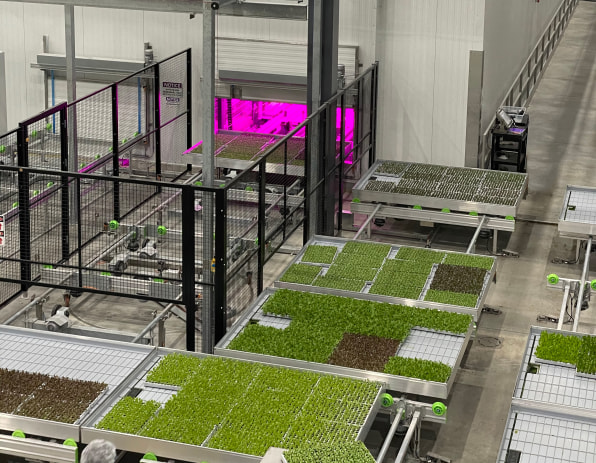
[Image: 80 Acres]All of this comes with a toll. Only 60% of the food we grow in the United States makes it onto our plates. Some of it rots in the field, some perishable produce ends up going bad in transit, and some expires on the shelves. The nutritional value takes a hit, too: Vegetables can lose between 15% and 77% of their vitamin C within a week of harvest.
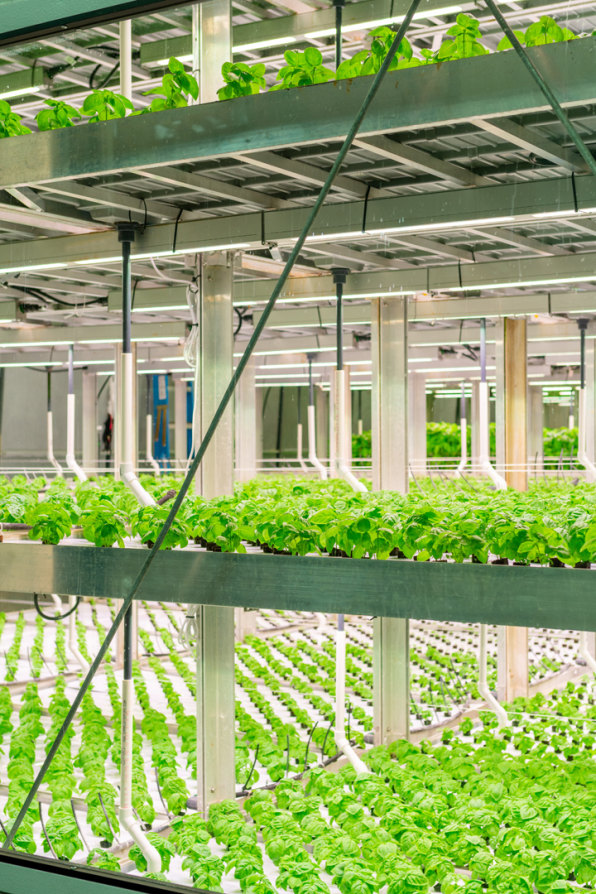

[Image: 80 Acres]80 Acres Farms, a vertical farming startup based in Cincinnati, only ships their produce within 50 to 100 miles of its farms. You can’t buy their salad blends in L.A. or in Boston, nor can you get their tomatoes in Austin or Miami. Earlier this year, the startup partnered with U.S. retail giant Kroger (also based in Cincinnati). Their greens and produce are now available in more than 300 Kroger supermarkets in Ohio, Indiana, and Kentucky. It may seem counterintuitive for a business to restrict its sales to a specific region, but 80 Acres Farms is betting that locally grown, locally distributed food can help eliminate food waste across the country, if only it can build enough farms to meet growing demands.
Tisha Livingston and Mike Zelkind started 80 Acres Farms in 2015, with a single vertical farm in a small facility outside Cincinnati that could produce 80 acres’s worth of fruits and vegetables. Since then, the company has grown to eight farms, most of them in Ohio. Every farm uses 97% less water than traditional farming, since the crops grow without soil, rain, or sunlight. 80 Acres Farms doesn’t use pesticides or GMOs, and their farms run entirely on renewable energy.
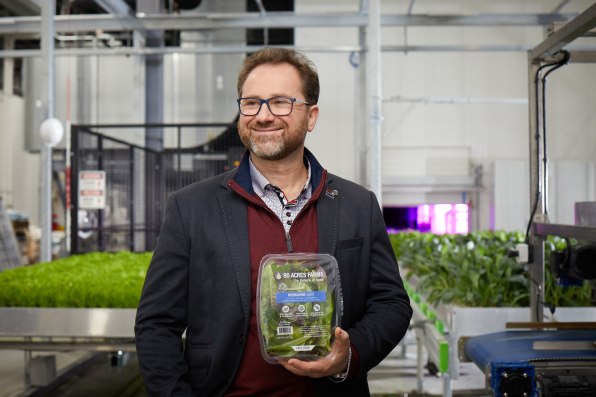
Tisha Livingston and Mike Zelkind started 80 Acres Farms in 2015, with a single vertical farm in a small facility outside Cincinnati that could produce 80 acres’s worth of fruits and vegetables. Since then, the company has grown to eight farms, most of them in Ohio. Every farm uses 97% less water than traditional farming, since the crops grow without soil, rain, or sunlight. 80 Acres Farms doesn’t use pesticides or GMOs, and their farms run entirely on renewable energy.

Mike Zelkind [Image: 80 Acres]80 Acres Farms isn’t the only vertical farm, nor is it the first one to place such a focus on locally grown food. In New York City, for example, the local urban agriculture company Gotham Greens now runs three rooftop greenhouses (two in Brooklyn, one in Queens). These facilities grow pesticide-free produce that is distributed to several Whole Foods stores throughout the city. In fact, about 25% of the produce sold at Whole Food stores comes from local farms. And while the same can’t be said for Kroger, a partnership with 80 Acres Farms will certainly help.
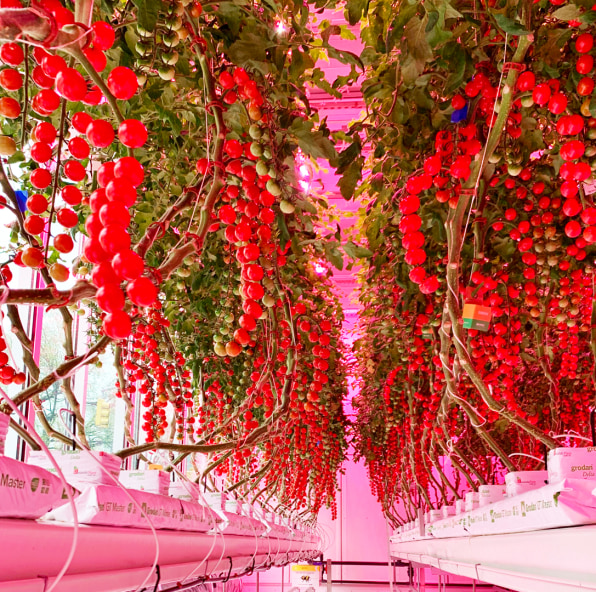

[Image: 80 Acres]This year, 80 Acres opened its largest farm to date. Stretching across 70,000 square feet in Cincinnati, it can grow 10 million servings of produce per year, increasing the company’s output by more than 5 times. This summer, the company also secured $160 million in funding, which the founders will use to diversify its crops and build more farms. “A farm by itself doesn’t do any good,” says Mike Zelkind, the company’s CEO, suggesting that it would take a network of farms to make an actual difference.
For now, 80 Acres Farms only services its immediate region. “We scale hyper-locally,” says Zelkind. For a few months at the start of the pandemic, 80 Acres Farms installed a pop-up tomato farm outside the Guggenheim Museum in Manhattan (as a supplement to a pandemic-shuttered exhibition dedicated to the countryside). Growing in a pink-lit shipping container on the plaza, about 3,000 tomatoes were harvested every Wednesday and donated to New York City’s largest food rescue organization, City Harvest.
“Food-supply chains today are very good, but they’re optimized for one variable, and that variable is cost,” says Zelkind. “We can get food almost anywhere, but you don’t get nutrition to a lot of these neighborhoods.” (The company uses automation, robotics, and machine learning to help monitor every stage of growth, as well as light, water, nutrients, and air flow needed to produce nutritious food.)
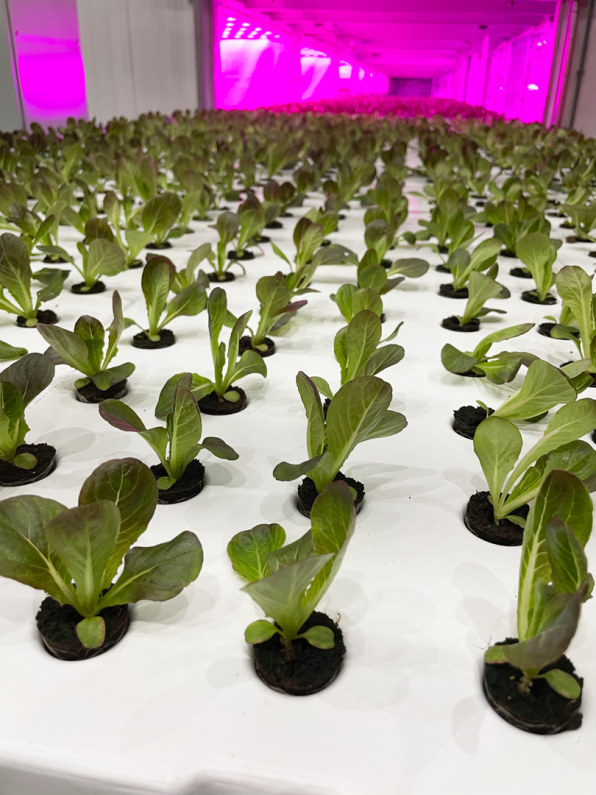
For now, 80 Acres Farms only services its immediate region. “We scale hyper-locally,” says Zelkind. For a few months at the start of the pandemic, 80 Acres Farms installed a pop-up tomato farm outside the Guggenheim Museum in Manhattan (as a supplement to a pandemic-shuttered exhibition dedicated to the countryside). Growing in a pink-lit shipping container on the plaza, about 3,000 tomatoes were harvested every Wednesday and donated to New York City’s largest food rescue organization, City Harvest.
“Food-supply chains today are very good, but they’re optimized for one variable, and that variable is cost,” says Zelkind. “We can get food almost anywhere, but you don’t get nutrition to a lot of these neighborhoods.” (The company uses automation, robotics, and machine learning to help monitor every stage of growth, as well as light, water, nutrients, and air flow needed to produce nutritious food.)

[Image: 80 Acres]Before partnering with Kroger, the company used to send a small fleet of trucks all over the region, delivering produce to every single store they served. Now, they are delivering to nearby distribution centers, where their produce is riding on trucks already going their way, “growing our audience without growing our carbon footprint,” as Zelkind puts it.
The entire process, from harvesting to the moment it hits the shelves, takes about 48 hours. Part of that is because of the company’s local distribution, but also every stage of the business, from seeding to harvesting and packaging, fits under one roof. “We’re selling a highly perishable product, and the faster we can get it to consumers, the fresher and more nutritious it is, and the longer it lasts in consumers’ homes,” explains Zelkind.
For now, 80 Acres grows salad blends, microgreens, tomatoes, and herbs. Zoe Plakias, an assistant professor of agricultural, environmental, and development economics at The Ohio State University, explains that none of these products are grown at scale in Ohio, where food policy is more focused on commodity crops like corn and soybeans. “If you’re a consumer in Ohio going to Kroger, you’re getting your fresh produce from elsewhere, not Ohio,” she says.

The entire process, from harvesting to the moment it hits the shelves, takes about 48 hours. Part of that is because of the company’s local distribution, but also every stage of the business, from seeding to harvesting and packaging, fits under one roof. “We’re selling a highly perishable product, and the faster we can get it to consumers, the fresher and more nutritious it is, and the longer it lasts in consumers’ homes,” explains Zelkind.
For now, 80 Acres grows salad blends, microgreens, tomatoes, and herbs. Zoe Plakias, an assistant professor of agricultural, environmental, and development economics at The Ohio State University, explains that none of these products are grown at scale in Ohio, where food policy is more focused on commodity crops like corn and soybeans. “If you’re a consumer in Ohio going to Kroger, you’re getting your fresh produce from elsewhere, not Ohio,” she says.

[Image: 80 Acres]Except now, the partnership with 80 Acres Farms means that Kroger can deliver locally grown, fresh produce that was farmed sustainably, and which can grow all yearlong because it is grown indoors. “Anything you can do to extend the season is going to be highly valued,” explains Plakias.
The partnership contributes to Kroger’s Zero Hunger-Zero Waste initiative, which aims to end hunger in local communities and eliminate waste, company-wide, by 2025. It has already decreased the amount of food waste produced by stores by over 7% (that’s over 90 million pounds of food saved.)
There’s something else, too, and it’s the fact that local food is valued more highly. “There’s economic evidence that consumers will pay a higher price for foods they know are produced locally,” says Plakias. “This creates incentives for growers to produce for local markets and for retailers to sell locally produced goods.” (That’s not to say that growing locally is necessarily cheaper.)
Ultimately, there are environmental benefits to producing for local markets, but for Plakias, it all depends on how the resources are used, what is being grown, and what it’s replacing in consumers’ shopping baskets. “Something produced locally is not necessarily produced sustainably,” she says. “All food production is local to someone.”
In the case of 80 Acres Farms, produce is local only to the Midwest, and it will remain so until the company expands its footprint (where it goes next remains unclear, though locations will be driven by market research.) “If we built farms 10 times as big as our reference model, we still wouldn’t be making a dent in consumer demand for fresh food,” says Zelkind. “What we can do is build farms in every community, making local produce accessible year-round to everyone.”
The partnership contributes to Kroger’s Zero Hunger-Zero Waste initiative, which aims to end hunger in local communities and eliminate waste, company-wide, by 2025. It has already decreased the amount of food waste produced by stores by over 7% (that’s over 90 million pounds of food saved.)
There’s something else, too, and it’s the fact that local food is valued more highly. “There’s economic evidence that consumers will pay a higher price for foods they know are produced locally,” says Plakias. “This creates incentives for growers to produce for local markets and for retailers to sell locally produced goods.” (That’s not to say that growing locally is necessarily cheaper.)
Ultimately, there are environmental benefits to producing for local markets, but for Plakias, it all depends on how the resources are used, what is being grown, and what it’s replacing in consumers’ shopping baskets. “Something produced locally is not necessarily produced sustainably,” she says. “All food production is local to someone.”
In the case of 80 Acres Farms, produce is local only to the Midwest, and it will remain so until the company expands its footprint (where it goes next remains unclear, though locations will be driven by market research.) “If we built farms 10 times as big as our reference model, we still wouldn’t be making a dent in consumer demand for fresh food,” says Zelkind. “What we can do is build farms in every community, making local produce accessible year-round to everyone.”
Bloomberg CityLab
Can Indoor Farms Reach Skyscraper Height?
A proposed Shenzhen skyscraper would include a 51-story hydroponic farm, as hopes grow that vertical farms can help address food insecurity.
Bloomberg News
December 13, 2021

A proposed skyscraper in Shenzhen would grow food along the border of each of its 51 floors.
Credit: Carlo Ratti Associati
As indoor farms that don’t rely on soil become a growing strategy to tackle food insecurity, one academic has a vision to take vertical farming to new heights in China’s mega-cities: the farmscraper.
Carlo Ratti, an architect who runs MIT’s Senseable City Lab, is proposing a 51-story skyscraper for China’s technology hub of Shenzhen with a large-scale vertical hydroponic farm inside that can produce crops like salad greens, berries and tomatoes to feed up to 40,000 people per year.
The proposed tower, which would include other amenities like office space, a supermarket and a food court, is being shortlisted for Chinese hypermarket chain Wumart’s new headquarters.
It’s one of a number of ideas to expand vertical farms, as breakthroughs in hydroponic and aeroponic technology allow for these indoor facilities to produce crops with higher yields using less land and water. Vertical farms are intended to grow crops more efficiently — stacking them in trays or vertical planters in indoor climate-controlled conditions, and using algorithms and other technology to optimize light and growing conditions, often in urban environments.
In Britain, Shockingly Fresh expects to grow about 2 million heads of leafy greens a year on its first vertical farm. And AeroFarms in Newark, New Jersey — billed as the world’s largest vertical farm when it opened in in 2016 — grows about 2 million pounds of food each year on its 70,000-square-foot facility. For comparison, Ratti’s farmscraper is projected to produce about 600,000 pounds of food annually, mostly around the facade of the 715-foot-tall building (218 meters).

Shockingly Fresh’s facility in Offenham, Worcestershire, doesn’t use any artificial light.
Photographer: Paul Ligas
Other dense regions like Singapore and Abu Dhabi are making big investments in vertical farming as part of their goal to produce a larger share of food locally. In Jersey City, New Jersey, vertical farms are being constructed in public housing communities, with the aim of tackling food insecurity by merging technology, education and food access. Other types of greenhouses that are not technically vertical farms are also relying on technologies like LED lighting and robots to optimize growing — AppHarvest in Kentucky produces 45 million pounds of tomatoes per year in a facility that it says yields 30 times more per acre than open fields, with 90% less water.
In Shenzhen, Ratti says his proposal would take vertical farming “to the next level.” The proposed Jian Mu Tower would not only build taller, establishing what he says would be the world’s first farmscraper. It would also be a model for “how to integrate the natural world into building design,” by incorporating farming around the entire shell of a skyscraper where people are also working, shopping and eating. The greenery would sit in what’s known as a double-skin facade, with windows on both sides to allow natural sunlight to reach both the plants and the building interior. Ratti says this design — and the copious amounts of sunlight in Shenzhen — will enable the farm to be less reliant on artificial light and heating, which come with high energy use. But the farm is also intended to have benefits for the built environment: The heat that reflects off tall buildings can make a city hotter. Encasing a skyscraper with a farm is a good way to not just mitigate this effect and keep the building cooler without air conditioning, Ratti says, but also to produce food to feed the people in that building.
“Our point was, why don’t we try to harvest this energy from the sun on the facade of the skyscraper and turn it into a giant farm,” he said. “This would not have been possible a few years ago, but it’s possible today, thanks to advances in hydroponics and also robotics.”

Plants sit between two sets of windows in the building’s “double-skin facade.” The interior of the building would also feature other trees and flowers to incorporate nature into its design.
Credit: Carlo Ratti Associati
Global food production currently accounts for a third of greenhouse gases, 80% of deforestation, 70% of terrestrial biodiversity loss, and 70% of all freshwater use, according to the World Wildlife Fund. And current food production will have to increase dramatically to meet growing population demands.
Vertical farms are one vision for how to produce more crops on less land. They’re touted as environmentally friendly, and they do use less water and fewer pesticides. But most vertical farms use fully enclosed systems with heating and artificial LED lights that can require huge amounts of electricity. Ratti’s reliance on sunlight is intended to tackle this criticism of many vertical farms, and other farms like Shockingly Fresh are relying entirely on natural light. Sunlight, however, is not as consistently available throughout the year, and unlike in artificially lit farms, dark winter afternoons will mean fewer crops grown.
Ratti believes China is an ideal place for his vertical farm vision. With about 1.4 billion mouths to feed, the country needs a sharp boost in farm productivity, which has been hurt by damaged soil, contaminated water, and overuse of fertilizer and pesticides. The government warned in September that food security could be affected by skyrocketing energy prices and in November, it urged households to stockpile food for the winter after extreme weather in October flooded crops in Shandong province, the country’s biggest vegetable producer. Jefferies Group LLC estimates the country has 21% of the world’s population with just 9% of its arable land.
“The big problem in China is a lack of arable land due to really rapid urbanization,” said Alesandros Glaros, a food security researcher at the University of Guelph in Ontario, Canada. “Vertical farming is a really innovative approach in this context because one of its big benefits is that it’s really efficient in terms of land use.”
But to solve food security and environmental concerns, Glaros said the jury is still out.
“The research is too early, I think, to make a reliable claim to saying that vertical farming is a food security solution,” he said. “There’s just not enough data. So although there are lots of commercial operations in existence around the world, we lack a lot of good environmental data on what the exact, for example, the environmental footprint is, what the potential yield is.”
Another current limitation is that only a few kinds of crops are grown in vertical farms, mostly low-calorie foods like greens, herbs and some fruits. So it’s not enough to sustain a population. “You're not gonna be growing things like corn or soy or wheat in these types of units,” Glaros said. Thus far, many of these farms also sell at higher organic prices, which makes the produce inaccessible to people with lower incomes.
Ratti envisions his farmscraper as a self-contained food supply chain, where the crops can be cultivated, sold and eaten all within the same building. His proposal bears some similarities to the 2013 Asian Cairns design from the French architecture firm Vincent Callebaut Architects, which called for six modular, pebble-shaped buildings in Shenzhen also called farmscrapers, each one a self-sufficient community with its own food source and housing.

The facade of the 51-story tower.
Credit: Carlo Ratti Associati
Daniel Safarik, assistant director of research at the Council on Tall Buildings and Urban Habitat, thinks a farmscraper smack dab in the middle of one of China’s most populous cities is feasible, but the challenge could come from sustaining such a structure.
“We’ve been putting green walls on skyscrapers for decades now, and some of the projects do indeed have edible produce,” he said. “The biggest challenge is not engineering them in the first place — it’s maintenance. After the ribbon-cutting, will the owners and operators of these vertical gardens continue to maintain them at the level that an array of fussy plants will require?”
One key prong of the Shenzhen facility’s maintenance would be the use of an AI-supported “virtual agronomist” tasked with managing the farm’s day-to-day operations, including irrigation and nutritional conditions. Ratti says the difference with his newest proposal is scale. “What it really allows you to do is locally source, to produce food for tens of thousands of people just with a skyscraper,” he said.
Ratti intends to build the farmscraper whether or not his design is selected by Wumart, and expects it could take no more than three years. His design is one of just two finalists for Wumart’s headquarters, he said, but the company declined a Bloomberg request for comment.
“We’re determined to build it, with Wumart or without Wumart,” Ratti said. “It’s just about the willingness to do something the world has never seen.”
Can Indoor Farms Reach Skyscraper Height?
A proposed Shenzhen skyscraper would include a 51-story hydroponic farm, as hopes grow that vertical farms can help address food insecurity.
Bloomberg News
December 13, 2021

A proposed skyscraper in Shenzhen would grow food along the border of each of its 51 floors.
Credit: Carlo Ratti Associati
As indoor farms that don’t rely on soil become a growing strategy to tackle food insecurity, one academic has a vision to take vertical farming to new heights in China’s mega-cities: the farmscraper.
Carlo Ratti, an architect who runs MIT’s Senseable City Lab, is proposing a 51-story skyscraper for China’s technology hub of Shenzhen with a large-scale vertical hydroponic farm inside that can produce crops like salad greens, berries and tomatoes to feed up to 40,000 people per year.
The proposed tower, which would include other amenities like office space, a supermarket and a food court, is being shortlisted for Chinese hypermarket chain Wumart’s new headquarters.
It’s one of a number of ideas to expand vertical farms, as breakthroughs in hydroponic and aeroponic technology allow for these indoor facilities to produce crops with higher yields using less land and water. Vertical farms are intended to grow crops more efficiently — stacking them in trays or vertical planters in indoor climate-controlled conditions, and using algorithms and other technology to optimize light and growing conditions, often in urban environments.
In Britain, Shockingly Fresh expects to grow about 2 million heads of leafy greens a year on its first vertical farm. And AeroFarms in Newark, New Jersey — billed as the world’s largest vertical farm when it opened in in 2016 — grows about 2 million pounds of food each year on its 70,000-square-foot facility. For comparison, Ratti’s farmscraper is projected to produce about 600,000 pounds of food annually, mostly around the facade of the 715-foot-tall building (218 meters).

Shockingly Fresh’s facility in Offenham, Worcestershire, doesn’t use any artificial light.
Photographer: Paul Ligas
Other dense regions like Singapore and Abu Dhabi are making big investments in vertical farming as part of their goal to produce a larger share of food locally. In Jersey City, New Jersey, vertical farms are being constructed in public housing communities, with the aim of tackling food insecurity by merging technology, education and food access. Other types of greenhouses that are not technically vertical farms are also relying on technologies like LED lighting and robots to optimize growing — AppHarvest in Kentucky produces 45 million pounds of tomatoes per year in a facility that it says yields 30 times more per acre than open fields, with 90% less water.
In Shenzhen, Ratti says his proposal would take vertical farming “to the next level.” The proposed Jian Mu Tower would not only build taller, establishing what he says would be the world’s first farmscraper. It would also be a model for “how to integrate the natural world into building design,” by incorporating farming around the entire shell of a skyscraper where people are also working, shopping and eating. The greenery would sit in what’s known as a double-skin facade, with windows on both sides to allow natural sunlight to reach both the plants and the building interior. Ratti says this design — and the copious amounts of sunlight in Shenzhen — will enable the farm to be less reliant on artificial light and heating, which come with high energy use. But the farm is also intended to have benefits for the built environment: The heat that reflects off tall buildings can make a city hotter. Encasing a skyscraper with a farm is a good way to not just mitigate this effect and keep the building cooler without air conditioning, Ratti says, but also to produce food to feed the people in that building.
“Our point was, why don’t we try to harvest this energy from the sun on the facade of the skyscraper and turn it into a giant farm,” he said. “This would not have been possible a few years ago, but it’s possible today, thanks to advances in hydroponics and also robotics.”

Plants sit between two sets of windows in the building’s “double-skin facade.” The interior of the building would also feature other trees and flowers to incorporate nature into its design.
Credit: Carlo Ratti Associati
Global food production currently accounts for a third of greenhouse gases, 80% of deforestation, 70% of terrestrial biodiversity loss, and 70% of all freshwater use, according to the World Wildlife Fund. And current food production will have to increase dramatically to meet growing population demands.
Vertical farms are one vision for how to produce more crops on less land. They’re touted as environmentally friendly, and they do use less water and fewer pesticides. But most vertical farms use fully enclosed systems with heating and artificial LED lights that can require huge amounts of electricity. Ratti’s reliance on sunlight is intended to tackle this criticism of many vertical farms, and other farms like Shockingly Fresh are relying entirely on natural light. Sunlight, however, is not as consistently available throughout the year, and unlike in artificially lit farms, dark winter afternoons will mean fewer crops grown.
Ratti believes China is an ideal place for his vertical farm vision. With about 1.4 billion mouths to feed, the country needs a sharp boost in farm productivity, which has been hurt by damaged soil, contaminated water, and overuse of fertilizer and pesticides. The government warned in September that food security could be affected by skyrocketing energy prices and in November, it urged households to stockpile food for the winter after extreme weather in October flooded crops in Shandong province, the country’s biggest vegetable producer. Jefferies Group LLC estimates the country has 21% of the world’s population with just 9% of its arable land.
“The big problem in China is a lack of arable land due to really rapid urbanization,” said Alesandros Glaros, a food security researcher at the University of Guelph in Ontario, Canada. “Vertical farming is a really innovative approach in this context because one of its big benefits is that it’s really efficient in terms of land use.”
But to solve food security and environmental concerns, Glaros said the jury is still out.
“The research is too early, I think, to make a reliable claim to saying that vertical farming is a food security solution,” he said. “There’s just not enough data. So although there are lots of commercial operations in existence around the world, we lack a lot of good environmental data on what the exact, for example, the environmental footprint is, what the potential yield is.”
Another current limitation is that only a few kinds of crops are grown in vertical farms, mostly low-calorie foods like greens, herbs and some fruits. So it’s not enough to sustain a population. “You're not gonna be growing things like corn or soy or wheat in these types of units,” Glaros said. Thus far, many of these farms also sell at higher organic prices, which makes the produce inaccessible to people with lower incomes.
Ratti envisions his farmscraper as a self-contained food supply chain, where the crops can be cultivated, sold and eaten all within the same building. His proposal bears some similarities to the 2013 Asian Cairns design from the French architecture firm Vincent Callebaut Architects, which called for six modular, pebble-shaped buildings in Shenzhen also called farmscrapers, each one a self-sufficient community with its own food source and housing.

The facade of the 51-story tower.
Credit: Carlo Ratti Associati
Daniel Safarik, assistant director of research at the Council on Tall Buildings and Urban Habitat, thinks a farmscraper smack dab in the middle of one of China’s most populous cities is feasible, but the challenge could come from sustaining such a structure.
“We’ve been putting green walls on skyscrapers for decades now, and some of the projects do indeed have edible produce,” he said. “The biggest challenge is not engineering them in the first place — it’s maintenance. After the ribbon-cutting, will the owners and operators of these vertical gardens continue to maintain them at the level that an array of fussy plants will require?”
One key prong of the Shenzhen facility’s maintenance would be the use of an AI-supported “virtual agronomist” tasked with managing the farm’s day-to-day operations, including irrigation and nutritional conditions. Ratti says the difference with his newest proposal is scale. “What it really allows you to do is locally source, to produce food for tens of thousands of people just with a skyscraper,” he said.
Ratti intends to build the farmscraper whether or not his design is selected by Wumart, and expects it could take no more than three years. His design is one of just two finalists for Wumart’s headquarters, he said, but the company declined a Bloomberg request for comment.
“We’re determined to build it, with Wumart or without Wumart,” Ratti said. “It’s just about the willingness to do something the world has never seen.”
No comments:
Post a Comment